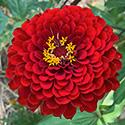Ask Us
Got Gardening Questions?
Visit or call the Hotline
Tuesday 9am-12pm
Call: 530-552-5812
Or drop by: The Butte County Cooperative Extension Office
5 County Center Drive
Oroville, CA 95965
Email Us
Email your questions to us at mgbutte@ucanr.edu. Include a description and photos of the problem. See "Help Us Help You" below for what to include.
Catch us in person
Look for us at local farmers markets or at one of our information booths at community events. Check out where we'll be on the Events page.
Help Us Help You
You never can tell what's at the root of the problem. Below are some questions we may ask when you contact us:
- Name of plant
- Age of plant
- Soil type (loam, sandy, clay)
- Current watering methods (drip, sprinkler, hand)
- Frequency of watering
- Sun exposure
- Evidence of insects or other damage – check on both sides of leaves
- Recent changes that may effect the plant (watering, fertilizing)
Samples and photos related to your question are strongly encouraged. Drop them by the office any time, or email them to: mgbutte@ucanr.edu
What’s Hot Now?

I love spring’s warmer weather and the return of lots of flowers, but I also suffer from allergies when spring arrives. Are there particular plants I should avoid introducing to my garden in order to cut down on possible allergens?
Pollen is often the culprit leading to allergic reactions. While all flowering plants produce pollen, those that are dispersed by the wind are the worst offenders. Grasses are major triggers for hay fever, so avoid planting ornamental varieties like pampas grass and miscanthus. Some fragrant plants, like honeysuckle, carnations, Daphne, and sweet Williams, can provoke an attack of hay fever or asthma. Plants in the daisy family, like chrysanthemums, marigolds, and zinnias, may be a hazard. The ubiquitous oleander, too, can be an irritant to allergy sufferers, as can liquidamber trees, which release pollen from their flowering heads. It’s best to do a little research before purchasing new nursery plants, just to be sure they will not cause you health problems down the line.
